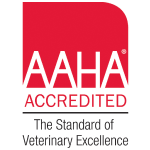We’re sure you and your pet are excited about spring. And who can blame you? The weather is lovely, the birds are chirping, and spending more time outdoors with your pet is right around the corner. To make the most of this beautiful season, we wanted to share our favorite tips for keeping your pet safe as spring, well… springs:
1. Don’t Let Pests Bug Your Pet
As your pet’s excitement for the outdoors returns, so do the parasites. Fleas, ticks, and heartworms may be small, but they become a major problem for pets in Spring. Luckily, you can keep your pet protected from creepy crawlies with medication and vigilance.
What are the effects of Spring parasites?
Fleas, ticks, and heartworms can all lead to fatal illnesses if left untreated.
- Fleas can cause anemia, severe infection from allergies, and mental anguish.
- Ticks can spread Lyme disease and other painful and debilitating diseases.
- And heartworms rob pets of their ability to breathe and their hearts to pump.
All it takes is one bite and your pet can become victim to parasites and the problems they cause.
2. Pollen, and Dust, and Dander… Oh My!
Spring allergies are nothing to sneeze at. And if you’re a pet, allergies can be downright awful. From watery eyes to a runny nose or itchy skin, dogs and cats can both suffer from common springtime allergies.
What signs should pet parents look for to determine if their pet may be experiencing seasonal allergies?
- Red eyes
- Discharge of the nose or eyes
- Wheezing, coughing, or sneezing
- Red, cracked skin
- Excessive paw licking or grooming
Luckily, pets don’t have to suffer from allergies. It’s as simple as making an appointment to see us. We can help determine if your pet’s symptoms are connected to Spring allergies and offer some relief for their discomfort.
In the meanwhile, use a damp cloth to clean your pet’s paws after walks or outdoor time.
3. Beware of Poisonous Plants
Those dazzling blooms that light up spring yards can cause your pet pain, discomfort, and even long-term health issues. Some plants (the Easter Lily being the most notorious) can be fatal to pets.
As you plan your spring garden, take measures to keep your pet away from toxic plants, and never leave your pet unattended if they have access to any of these:
- Daffodils
- Tulips
- Lilies
- Rhododendrons
- Sago Palms
- Azaleas
- Hyacinths
4. Watch Out for Standing Water
Hiding beneath the surface of standing water, you can find a world of microscopic lifeforms, including those that can get your pet sick. Blue-green algae and leptospirosis are two top contenders. Chemical run-off can also make your pet quite ill.
Blue-green algae is fatal for dogs while leptospirosis can cause long-lasting diarrhea and dehydration.
To protect your pet, never let your cat or dog drink from puddles and stagnant water. You can also ask us about the leptospirosis vaccine during your pet’s next exam.
5. Garden Tools and Chemicals Can be Hazardous
From sharp, rusty tools to herbicides and pesticides, gardening presents safety concerns for pets. As you prep your spring garden, be mindful of where you use pesticides and herbicides. Never use these chemicals where your pet walks or plays. Be mindful on walks that your neighbors may use lawn-additives that could make your pet sick. Rinse your dog or cat’s feet before they come inside.
As for your gardening tools, always put them somewhere safe, out of reach of your pet.
Wishing You a Bright, Cheerful, and Safe Spring
This year has brought us renewed hope and the spring weather has warmed our spirits. We hope you and your pet keep the ball rolling by staying safe and having a delightful Spring.
If your pet is due for a refill of their flea, tick, or heartworm medication make an appointment to see us soon. The South Hyland Pet Hospital team hopes to see you soon!
Image Credit: Pexels


